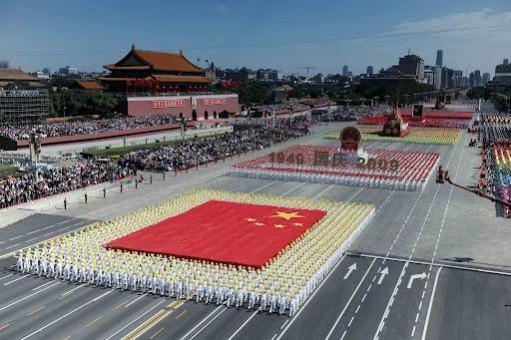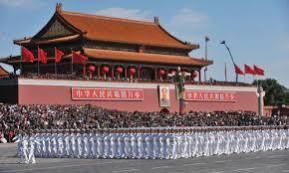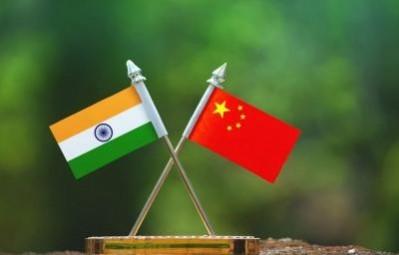
On 3 October 2025, Rick Fisher, senior fellow at the International Assessment and Strategy Center, publicly responded to claims made by Dr. Victor Gao a month earlier concerning China's new DF‑61 missile. Fisher described Gao as a "Han envoy" engaged in a form of cognitive warfare using exaggerated rhetoric to artificially inflate Beijing's nuclear deterrent image and to foster strategic ambiguity. Fisher specifically critiqued Gao's claim that the missile could carry "60 nuclear warheads plus one hydrogen bomb" and achieve "global reach in less than 20 minutes" as "propaganda" unsupported by physics or system design. He emphasized the importance of discerning actual technical capacity from political signaling and stressed the need for verification. Fisher stated in an interview, "Such an ICBM would not be significantly larger than a DF-41 to remain road-mobile. The DF-61 appears similar in size and function to the DF-41 and is designed to outperform it, but claims like '60 warheads' are widely exaggerated."
This statement directly responded to Gao's remarks during interviews conducted immediately after China's 3 September 2025 National Day parade in Beijing, which celebrated the 80th anniversary of the victory over Japan in World War II. Gao, Vice President of the Center for China and Globalization, outlined the strategic weight of the DF‑61, asserting it as a potent symbol of China's growing military strength and an instrument of geopolitical messaging. Gao conveyed that the missile's capabilities reinforce China's deterrence posture globally and urged the United States to recognize this shift. While Gao's technical details lacked veracity, his strategic message resonated within China's broader efforts to shape global perceptions of its military rise. Gao stated, "DF-61's deployment demonstrates China's resolve and capability to defend its interests everywhere. The speed and payload make it a formidable weapon in the competition."
The September 3, 2025 parade marked not only a commemorative historical moment but also a tangible milestone in China's nuclear modernization efforts. The DF‑61 was publicly shown for the first time, drawing global attention. This eight-axle, road-mobile ICBM displayed on massive 16-wheeled transporter erector launchers (TELs) underscores China's doctrinal focus on survivability, rapid deployment, and operational flexibility. The missile's mobility allows dispersal and concealment over vast, rugged terrain, posing a serious challenge to strike and surveillance capabilities of potential adversaries.
The technical context is essential to understanding this transformation. The DF‑61 is believed to feature solid-fuel propulsion, marking a departure from the cumbersome, vulnerable liquid-fuel predecessors. Solid-fuel rockets permit rapid launch readiness, reducing pre-strike vulnerability windows. The missile complements China's nuclear triad joining silo-based DF‑5 and existing road-mobile DF‑41 ICBMs and submarine-launched ballistic missiles (SLBMs) like the JL-3. Open estimates place China's current nuclear warhead inventory near 500–600, with projections suggesting potentially over 1,000 warheads by 2030, propelled in part by the introduction of enhanced missiles like the DF-61 with MIRV capability likely numbering between 7 and 14 warheads per missile.
Rick Fisher has further elaborated, "The DF-61 or systems aligned with earlier references as DF-45 or DF-51 are clearly designed to surpass the DF-41 in capability while retaining road mobility and survivability. These systems typically carry multiple warheads designed to saturate missile defenses. The exact warhead count remains unconfirmed, but credible estimates suggest between 7 and 14 MIRVs, significantly complicating missile defense."
China's own narrative casts these developments as pivotal for national defense and deterrence stability. The parade's official messaging emphasized a "nuclear triad" approach, combining advanced land-based ICBMs, ballistic missile submarines, and air-launched capabilities to ensure strategic balance and credible second-strike capacity. This multi-platform approach strengthens deterrence by complicating adversaries' attempts at preemptive counterforce strikes or missile defense circumvention.

In assessing the strategic impact, the DF-61 must be interpreted through the SPAT framework: Survivability, Potency, Ambiguity, and compressed Decision Time. Mobility and dispersal reinforce Survivability, enabling multiple launchers to avoid detection. Potency is magnified through MIRV deployment, allowing each missile to engage multiple targets. Ambiguity stems from limited disclosures on numbers, readiness, and deployment locations, forcing adversaries to prepare for worst-case scenarios. Decision Time contracts sharply, with shorter detection-to-launch windows pressuring adversaries' command decisions during crises.
General Paul Selva, former U.S. Vice Chairman of the Joint Chiefs of Staff, remarked, "Mobility, MIRVs, and integrated sensor networks drastically reduce adversaries' decision-making timelines, creating new challenges for maintaining strategic stability and preventing inadvertent escalation." This compression in decision-time magnifies risks in flashpoints like the Taiwan Strait, where TEL movements could be misinterpreted as preliminary launch activity, escalating tensions in seconds.
Furthermore, India's strategic community recognizes that the introduction of the DF-61 reshapes regional deterrence. Indian analyst Dr. Raja Menon commented that "Survivability and resilience must dominate strategic planning; mirror-matching by numbers alone will no longer suffice to deter a more agile and ambiguous threat." India's response includes accelerating the development of mobile Agni-class missiles, resilient command networks, and improving maritime nuclear deterrence to maintain second-strike credibility under compressed timelines.
From the United States, the DF-61 has catalyzed shifts in nuclear posture and defense investment. U.S. military and political leaders emphasize the expansion of sea-based nuclear deterrents with enhanced SSBN patrols and prioritizing missile defense and ISR to counter compressed warning1 windows and greater missile mobility. NATO allies similarly push for increased strategic autonomy, better integrated early-warning systems, and intelligence-sharing mechanisms. As Dr. Cordula Meyer elucidates, "Europe's security demands resilient, interoperable missile defense and early-warning frameworks beyond reliance on the U.S. nuclear umbrella."
Strategically, the DF‑61 imposes a profound challenge to the global balance by transforming survivability and lethality metrics on land-based forces. Intelligence agencies emphasize structural monitoring of missile flight tests, TEL production, and deployment activity, alongside cryptic doctrinal writings, to gauge China's operational posture. Hans M. Kristensen of the Federation of American Scientists stressed, "Only multi-source, real-time intelligence fusion can prevent miscalculations born from ambiguity and strategic uncertainty."
Strategic policy prescriptions converge on resilience first: hardening sea-based deterrents, diversifying nuclear command-and-control (NC3) architecture, and institutionalizing crisis de-escalation protocols that account for misinterpretation risks. Multilateral intelligence coalitions employing satellite, SIGINT, and commercial imagery seek to transform uncertainty into verified situational awareness. Transparency initiatives targeting reciprocal test notifications can temper worst-case planning without compromising operational security.
China's messaging apparatus, combining the parade's hardware display with Gao's vocal assertions, forms a cognitive warfare construct. It leverages strategic ambiguity and perception management to reinforce deterrence beyond immediate military capability, aiming to deter adversaries preemptively by complicating their risk assessment calculus.

The DF‑61 stands as a strategic catalytic force that not only embodies China's nuclear modernization ambitions but reframes global deterrence by integrating mobility, ambiguity, and advanced targeting networks. The strategic challenge for global powers is now to match this evolution with resilient deterrence architectures, enhanced surveillance, and crisis management systems capable of addressing risks compounded by compressed decision-making cycles and perception battles.
General Selva's aphorism captures the essence of this new era: "Weapon displays influence perception faster than capability evolves; the strategic mandate is to transform perception into disciplined, informed policy." The DF‑61 is emblematic not merely as an asset but as a strategic force reshaping the calculus of escalation, deterrence, and geopolitical stability for the foreseeable decade.
[Major General Dr. Dilawar Singh, IAV, is a distinguished strategist having held senior positions in technology, defence, and corporate governance. He serves on global boards and advises on leadership, emerging technologies, and strategic affairs, with a focus on aligning India's interests in the evolving global technological order.]









